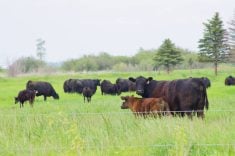Proper vaccination and castration are two of the most important chores for feedlot operators when processing new arrivals, according to Dr. John Campbell, the head of large animal clinical science at the Western College of Veterinary Medicine.
Campbell discussed two different types of vaccines in a presentation to a group of students at the Western Canadian Feedlot management school at the University of Saskatchewan’s feedlot facility in Saskatoon.
‘Killed’ vaccines contain dead forms of the bacteria or virus they are meant to protect against. These vaccines must be kept cool. Once a bottle is opened, if the contents aren’t used, they can be resealed and refrigerated for use later, provided they are clean and uncontaminated. Clostridial vaccines are usually of this type.
Read Also

House ag committee to undertake several studies
The House of Commons standing agriculture committee has set its agenda for the coming months. Members began the fall sitting with a two-hour update on international trade
Many of the viral vaccines used in feedlots work differently. They contain live virus modified to not cause disease. These vaccines usually come in two parts: a sort of cake that contains the organism, and a sterile water solution. The two parts must be mixed together just before use.
Campbell pointed out that vaccines with live virus in them must be used shortly after being mixed.
Leftovers can’t be saved as the virus in them will die quickly once it’s in the water. These vaccines also have to be kept cool, and Campbell recommended that producers bring a cooler with them if they are going to use them in a pasture, and that they should be kept out of the sun.
Campbell also advised producers to make sure they keep their refrigerators in good working order and to check the temperatures on them regularly.
After vaccination, Campbell said one of the jobs that often falls to feedlot operators is castration.
Ideally, Campbell said the best practice in terms of animal welfare is to castrate calves at about two or three months old, long before they hit a feedlot.
Europe has already made this practice law, and Campbell said that while he doubts there would be a law like this in North America, he expects pressure to increase to make castration of calves the industry standard.
If bulls are to be castrated late, Campbell said there is really not much difference in animal welfare between a surgical castration and one done using a rubber band.
“Would you rather a lot of pain quickly or less pain for a longer time?” he asked.
However, Campbell did recommend the use of the rubber band wherever possible, saying it was safer for operators as there was less chance of being kicked and no need to carry an open scalpel.
He also said there is less risk of complications with the band as opposed to the surgery.
One risk associated with the rubber band is tetanus. The bacteria thrives in oxygen free environments, such as that created in the scrotum of a bull once the blood is cut off by the band.
Campbell said this was yet another reason to make sure to vaccinate, and to check to be sure that the clostridial vaccine being used contained a vaccination for tetanus.
















